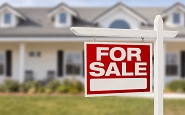Steel Markets

Housing Market Slows in July
Written by Sandy Williams
August 22, 2018
Sales of both new and existing homes declined in July as higher prices impacted affordability for buyers.
Existing home sales fell for the fourth consecutive month in July, dipping 0.7 percent to a seasonally adjusted annual rate of 5.34 million. Sales are 1.5 percent below a year ago, said the National Association of Realtors.
 Sales of single-family homes fell 0.2 percent in July, while condo and co-op sales dropped 4.8 percent. Regionally home sales plunged 8.3 percent in the Northeast and slipped 1.6 percent in the Midwest and 0.4 percent in the South. Existing home sales rose 4.4 percent in the West during July, but were still down 4.0 percent from a year ago.
Sales of single-family homes fell 0.2 percent in July, while condo and co-op sales dropped 4.8 percent. Regionally home sales plunged 8.3 percent in the Northeast and slipped 1.6 percent in the Midwest and 0.4 percent in the South. Existing home sales rose 4.4 percent in the West during July, but were still down 4.0 percent from a year ago.
“Led by a notable decrease in closings in the Northeast, existing home sales trailed off again last month, sliding to their slowest pace since February 2016 at 5.21 million,” said NAR Chief Economist Lawrence Yun. “Too many would-be buyers are either being priced out, or are deciding to postpone their search until more homes in their price range come onto the market.”
The median existing price for all home types increased 4.5 percent year-over-year to $269,600. Single-family median price grew 4.6 percent to $272,300 and condo/co-op media price increased 3.2 percent to $248,100.
Inventory continues to be tight, falling 0.5 percent to 1.92 million existing homes for sale, a 4.3 month supply at the current sales pace.
New Home Sales at Nine-Month Low
Sales of new single-family homes fell 1.7 percent in July to a seasonally adjusted annual rate of 627,000 units, according to data released by the Commerce Department. Sales for the month were at a nine-month low.
New-home sales plunged 52.3 percent in the Northeast and dipped 3.3 percent in the South. The Midwest and West saw gains of 9.9 percent and 10.9 percent, respectively.
The median sales price for new homes on the market increased 1.8 percent year-over-year to $328,700 in July. Inventory increased to 309,000 single-family homes for sale, a 5.9-month supply at the current sales rate.
“Managing rising construction costs in the months ahead will be a key challenge for housing affordability, as input costs increase, although recent declines in lumber prices should help,” said Danushka Nanayakkara-Skillington, Assistant Vice President for Forecasting and Analysis at the National Association of Home Builders.
Jeffries economist Ward McCarthy said the slowdown in sales may be temporary. “Housing activity in general has retreated from levels that were temporarily boosted by 2017 natural disasters—hurricanes and wild fires—that forced displaced households to seek alternative housing. The housing sector is also undergoing an adjustment to affordability that is less attractive than it was for most of the cycle, as well as changes in the treatment of SALT deductions in the federal tax code. That is the bad news,” said McCarthy. “The good news is that there is no evidence of the type of imbalances that could cause a sharp downturn, such as heavy inventories and/or rising mortgage default and delinquency rates. We also note this is not the first temporary slowdown in housing activity this cycle.”
Key Banc analyst Kenneth Zener, however, said July housing data warrants caution. “Falling new sales in July justifiably temper recent home builder comments and results, indicating an acceleration is not in the cards, in our view,” said Zener.

Sandy Williams
Read more from Sandy WilliamsLatest in Steel Markets

CRU: Sheet import demand softens as domestic price gains have slowed
US domestic sheet price gains have begun to slow as previously pulled-forward demand has led to a decline in orders.

CMC looks beyond Arizona micro-mill woes to long-term viability of construction mart
Despite the economic and geopolitical upheaval of the last five years, CMC President and CEO Peter Matt points out that the construction market has been an essential element of the way forward.

US importers face stricter rules under revamped S232 tariffs
“CBP expects full compliance from the trade community for accurate reporting and payment of the additional duties. CBP will take enforcement action on non-compliance," the agency said in a March 7 bulletin.

Steel exports rebound in January
US steel exports recovered to a five-month high in January after having fallen to a two-year low in December. This growth follows four consecutive months of declining exports.

Construction spending drops marginally in January
Construction spending edged down slightly in January, slipping for the first time in four months. The US Census Bureau estimated spending at a seasonally adjusted annual rate of $2,196 billion in January, down 0.2% from December’s downward revised rate. The January figure is 3.3% higher than a year ago. January’s result, despite the slight erosion, […]
